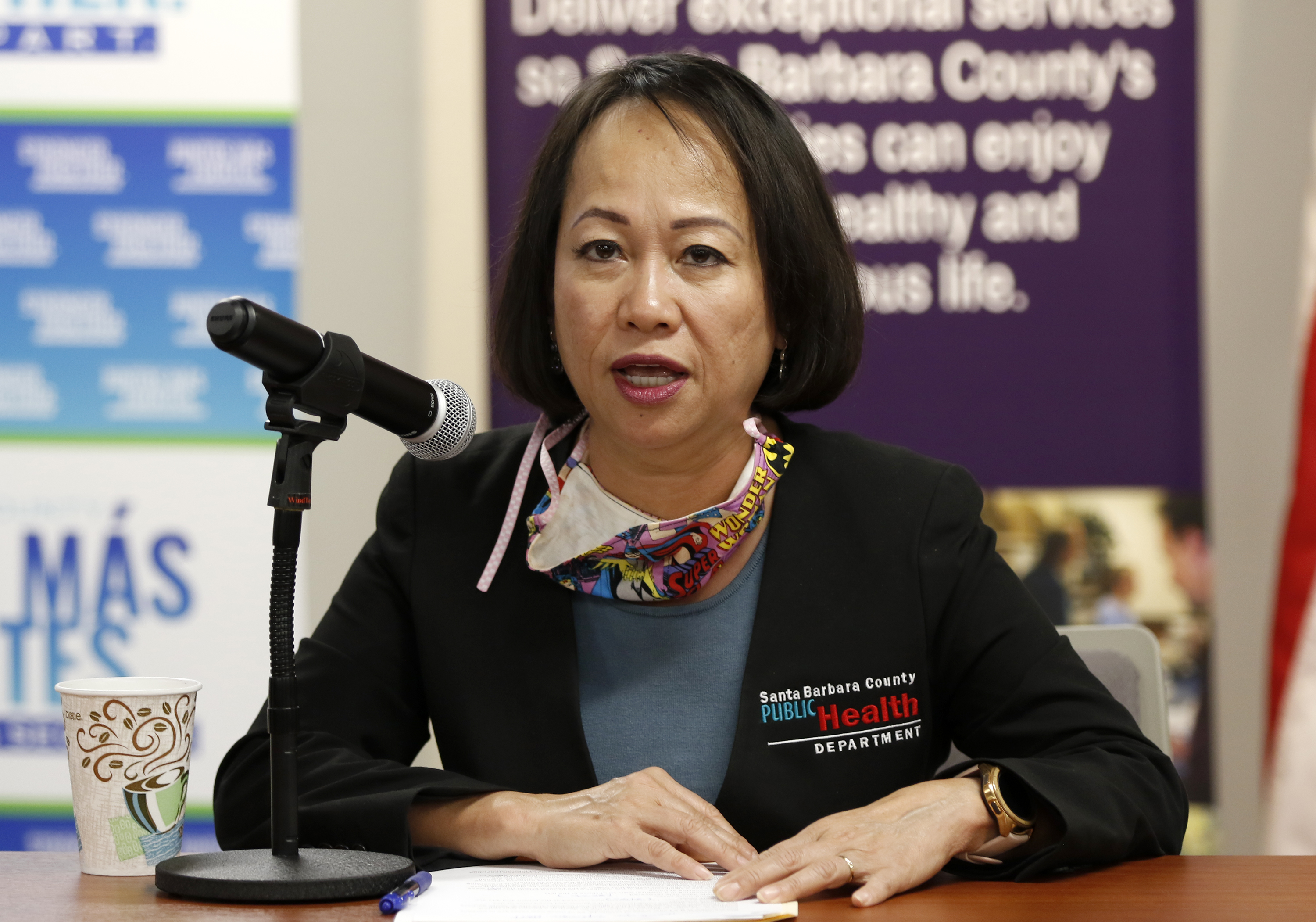County Officials Stress Tactics to Reduce COVID Cases
Santa Barbara County COVID Cases Tick Upward

In a COVID briefing held this afternoon, both County Supervisor Gregg Hart and Public Health Director Van Do-Reynoso stressed that until certain criteria are met, the strict restrictions on social gatherings and in-person school instruction will remain in place.
Santa Barbara County remains on the state watchlist, Hart said, for having too high a rate of positive cases. According to Dr. Do-Reynoso, the county had 98 new cases today, with 80 hospitalized patients and 20 of those in the intensive care unit. She also announced that of the 5,931 total cases in Santa Barbara County, 333 are active, or individuals who are still infectious, or less than 10 days from the appearance of their symptoms.
“We know there are cases in the community that have not been identified, which is why the active cases don’t tell us the full story,” Do-Reynoso said.
“Until a vaccine is widely distributed, we have limited tools to slow the spread of the virus,” Hart cautioned. Nearly two-thirds of cases, he said, have been traced to person-to-person contact at home, work, or social gatherings, while the rest are linked to community transfer. Hart emphasized the need to limit contact with people outside one’s home, wear a face covering, and maintain six feet of distance from others. “These practices are working all over the world because people are listening to medical professionals and working to stop the spread of the virus.” Hart said.
As well as keeping track of cases for public health reasons, the state requirements caused changes to some reporting methods recently, Do-Reynoso explained, which accounts for jumps in the number of positive cases among health-care workers. They appeared to leap upward from 193 a week ago to 320 yesterday. Do-Reynoso said the state classification for health-care workers changed the county’s method and that some previous cases were just now catching up in the count.
In regard to the upcoming reduction of federal unemployment benefits, Hart stated the House of Representatives passed legislation to extend benefits until next year, while Senate Republicans propose to cut the benefits from $600 to $200. Should the extra benefits be cut, the average unemployment compensation for Californians is $1,350 a month.
“It doesn’t take an economist to see how hard it is to pay rent and survive on $1,350 a month, when our housing costs are among the highest in the state,” Hart said.
The State Legislature is in talks to introduce a California supplement, which would extend the safety net for individuals and small businesses, Hart added. The benefits would include an expansion of the earned income tax credit, continued eviction protection, increased support for broadband internet for underserved communities, and expanded tax credits for small businesses.
To help offset the hard economic times that have resulted in long lines at the Foodbank of Santa Barbara County, Vitamin Angels, an international nonprofit based in Santa Barbara announced the Healthy Futures Initiative. The new program hopes to provide $500,000 in support of the health of expecting mothers and vitamins for vulnerable children in communities that lack food security.


